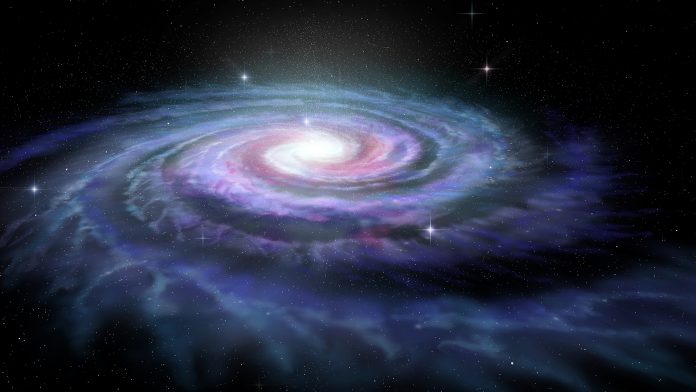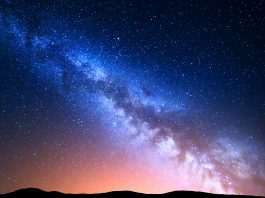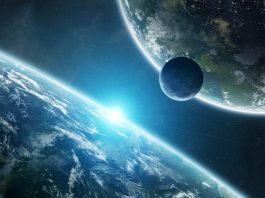An international team of astronomers has found that the Milky Way is too big for its cosmological wall, something yet to be seen in other galaxies.
A cosmological wall is a flattened arrangement of galaxies found surrounding other galaxies, characterised by particularly empty regions called ‘voids’ on either side of it. These voids seem to squash the galaxies together into a pancake-like shape to make the flattened arrangement.
This wall environment, in this case, called the Local Sheet, influences how the Milky Way and nearby galaxies rotate around their axes in a more organised way than if we were in a random place in the Universe, without a wall.
Typically, galaxies tend to be significantly smaller than this so-called wall. The Milky Way is found to be surprisingly massive in comparison to its cosmological wall, a rare cosmic occurrence.
The new research is published in Monthly Notices of the Royal Astronomical Society.
Using computer simulations to make new discoveries
The new findings are based on a state-of-the-art computer simulation, part of the IllustrisTNG project. The team simulated a volume of the Universe nearly a billion light-years away that contains millions of galaxies. Only a handful – about a millionth of all the galaxies in the simulation – were embedded in a cosmological wall like the Local Sheet and as massive as our home galaxy.
According to the team, it may be necessary to consider the special environment around the Milky Way when running simulations, to avoid a so-called ‘Copernican bias’ in making scientific inferences from the galaxies around us.
This bias, describing the successive removal of our special status in the nearly 500 years since Copernicus demoted the Earth from being at the centre of the cosmos, would come from assuming that we reside in a completely average place in the Universe.
To simulate observations, astronomers sometimes assume that any point in a simulation such as IllustrisTNG works, but the team’s findings indicate that it may be important to use precise locations to make such measurements.
What makes our galaxy so special?
“So, the Milky Way is, in a way, special,” said Miguel Aragón, who led the research project. “The Earth is obviously special, being the only home of life we know. But it’s not the centre of the Universe or even the Solar System.
“And the Sun is just an ordinary star among billions in the Milky Way. Even our galaxy seemed to be just another spiral galaxy among billions of others in the observable Universe.”
“The Milky Way doesn’t have a particularly special mass or type. There are lots of spiral galaxies that look roughly like it,” explained Joe Silk, another of the researchers.
“But it is rare if you consider its surroundings. If you could see the nearest dozen or so large galaxies easily in the sky, you would see that they all nearly lie on a ring, embedded in the Local Sheet. That’s special in itself. What we newly found is that other walls of galaxies in the Universe like the Local Sheet very seldom seem to have a galaxy inside them that’s as massive as the Milky Way.”
“You might have to travel half a billion light years from the Milky Way, past many galaxies, to find another cosmological wall with a galaxy like ours,” Aragón commented. “That’s a couple of hundred times farther away than the nearest large galaxy around us, Andromeda.”
Neyrinck, a co-researcher of the project concluded: “You do have to be careful, though, choosing properties that qualify as special. If we added a ridiculously restrictive condition on a galaxy, such as that it must contain the paper we wrote about this, we would certainly be the only galaxy in the observable Universe like that.
“But we think this ‘too big for its wall’ property is physically meaningful and observationally relevant enough to call out as really being special.”









